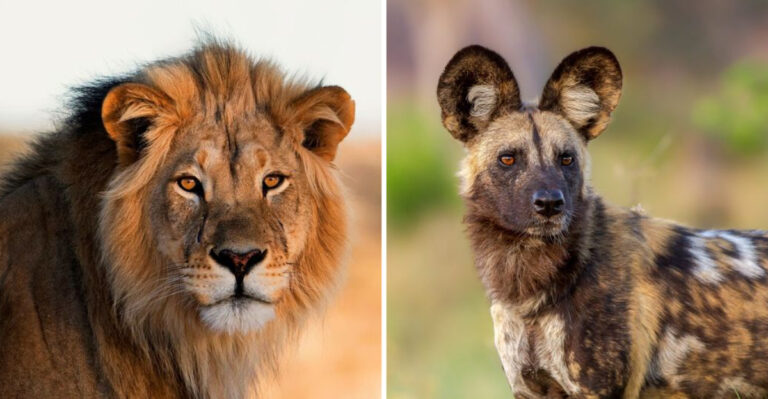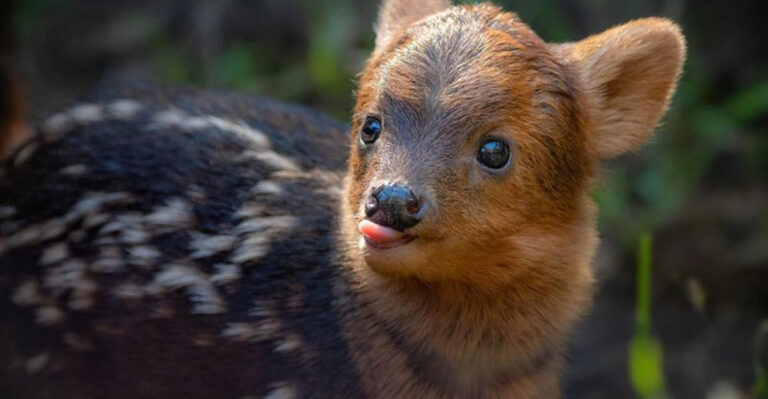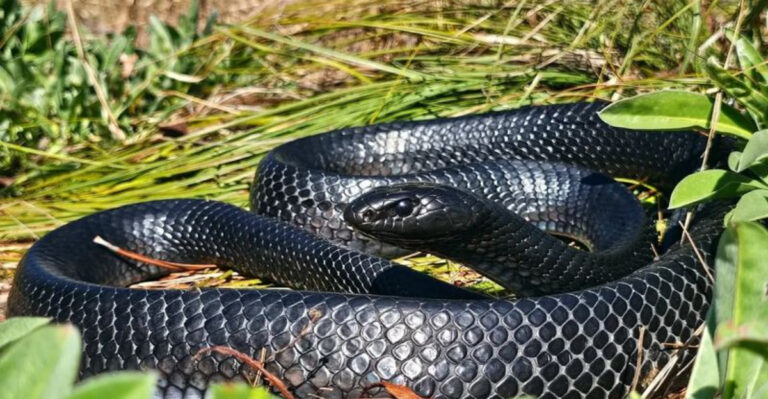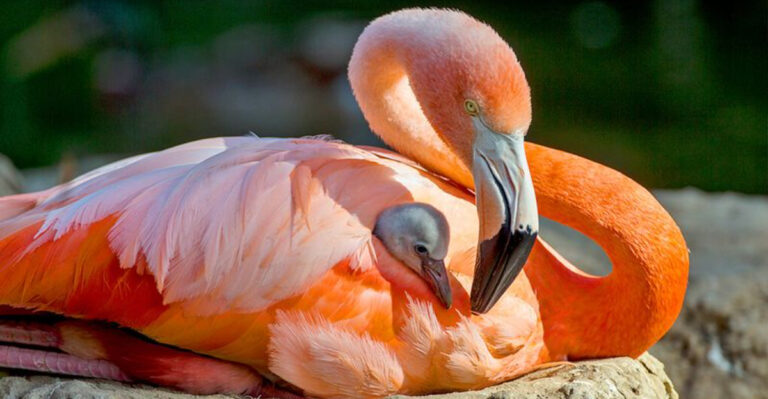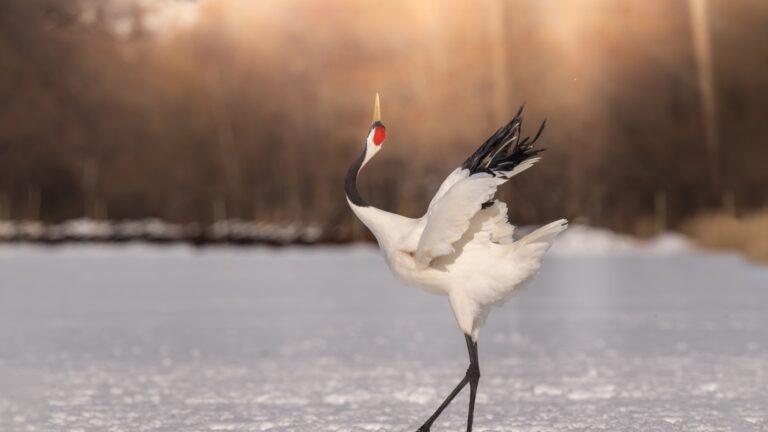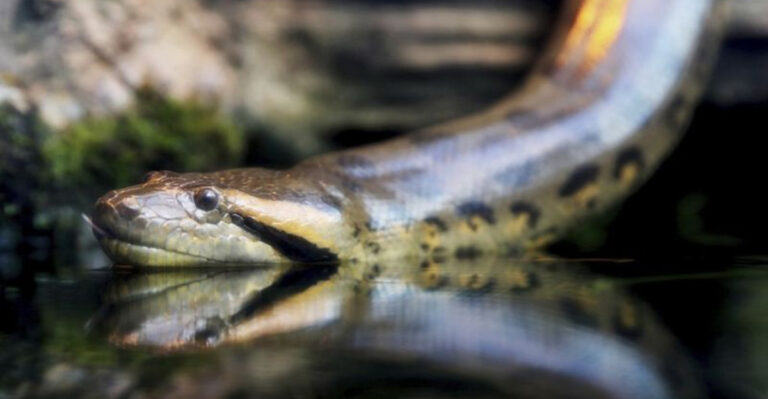10 Incredible Animals That Turn White In Winter
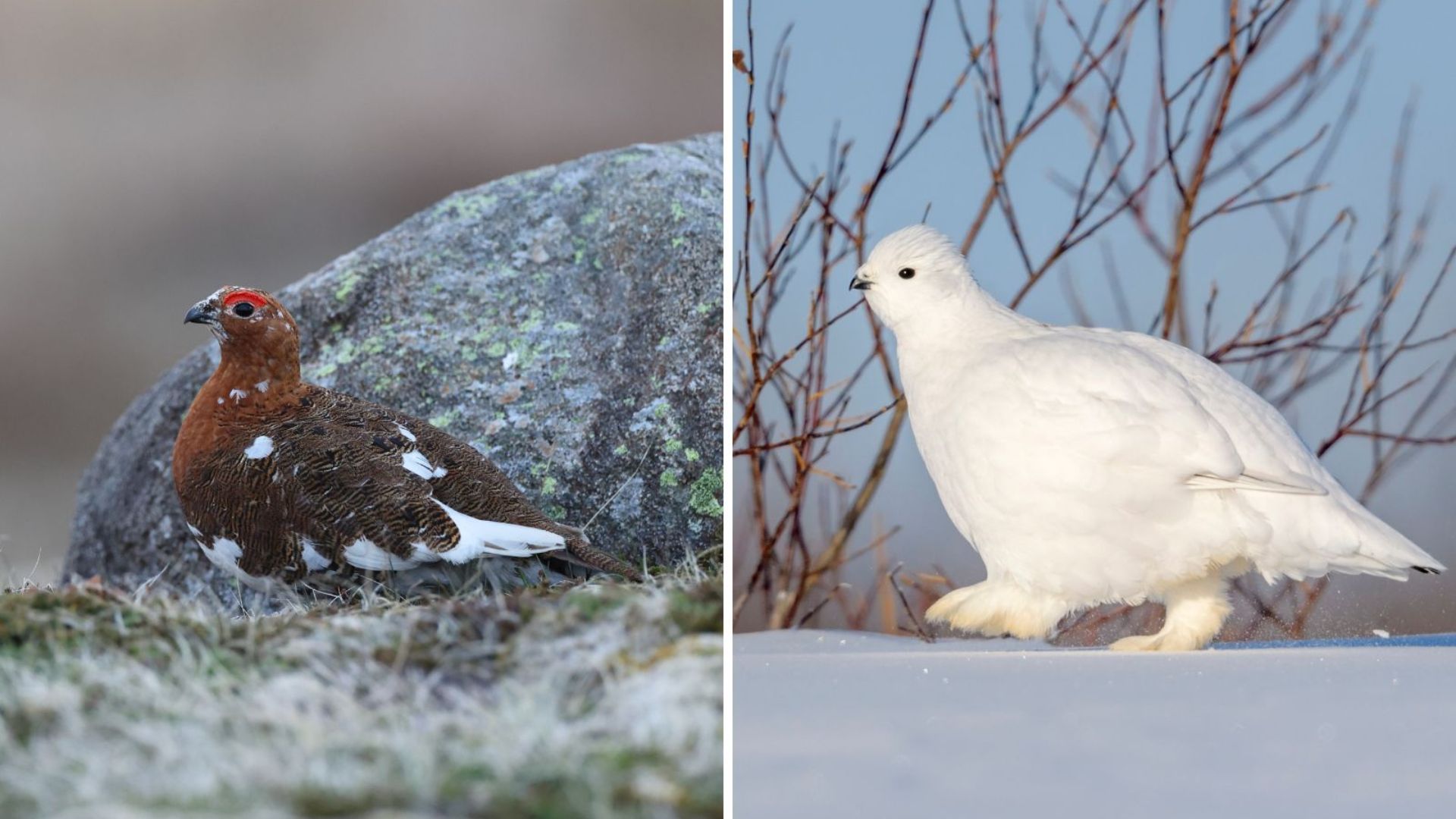
As the temperatures drop and the air turns crisp, there’s no mistaking it: Winter is on its way!
Just like us, animals brace for the chill in their own unique ways. While some hibernate through the cold months, others remain active, facing the winter with heightened awareness.
Interestingly, many creatures have developed incredible adaptations, like changing the color of their fur to match the season.
This remarkable transformation helps them blend into snowy surroundings, providing protection and camouflage during the harsh winter months.
Curious about which animals turn white during winter? Keep reading to find out!
1. Arctic Fox
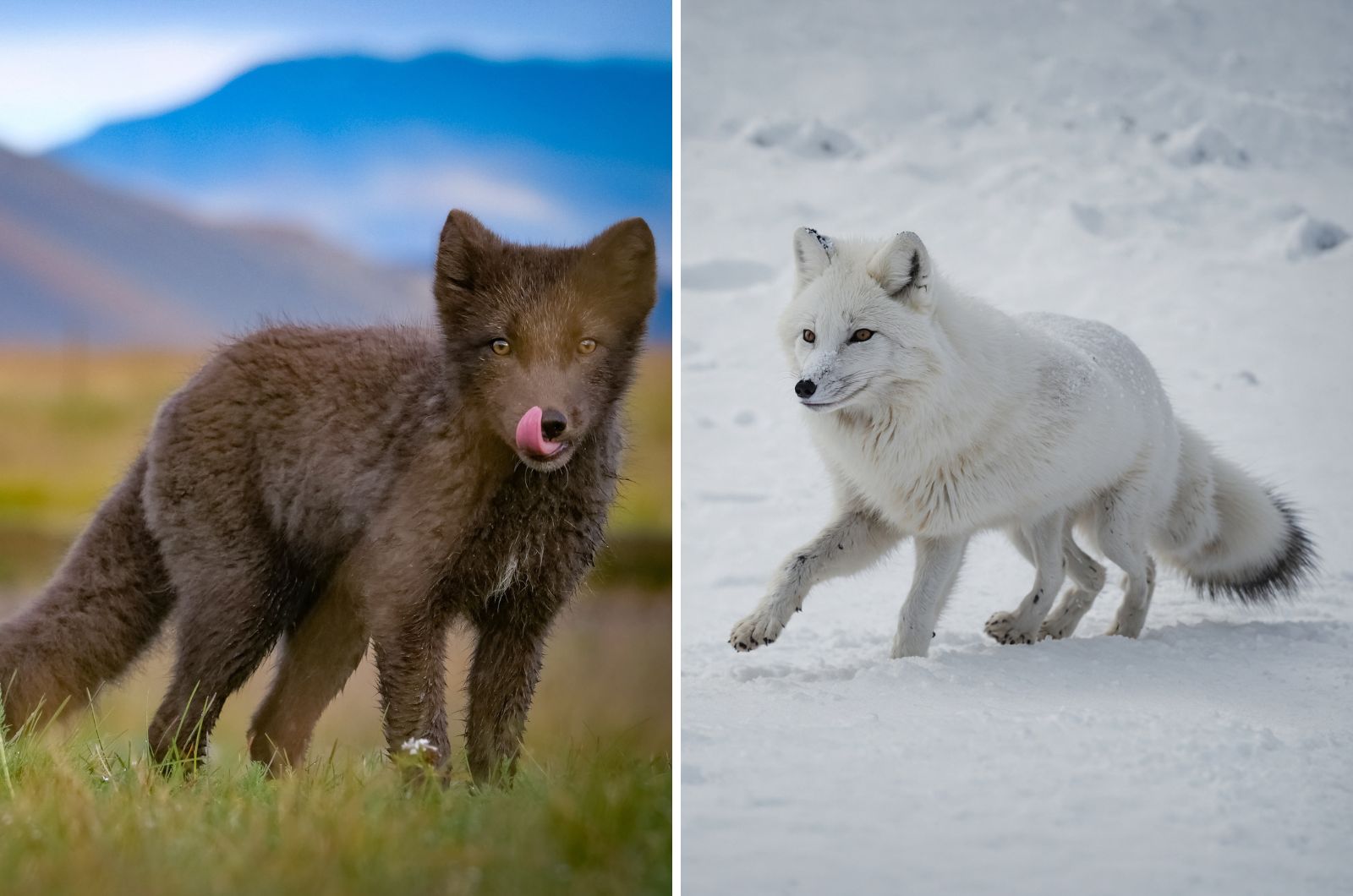
The Arctic fox is one of the most fascinating examples of how animals adapt to the harsh, cold climates of the northern tundra. During the warmer months, this little fox sports a luxurious grayish-brown coat that helps it blend into the rocky, barren landscape.
However, when the frigid winter temperatures roll in, the Arctic fox undergoes a remarkable transformation. Its fur changes to a pure snowy white, offering perfect camouflage against the thick layers of snow that blanket the tundra.
This winter coat doesn’t just provide excellent concealment from predators, like wolves and polar bears, but it also plays a crucial role in keeping the fox warm in extreme cold. The thick undercoat traps heat, while the longer, guard hairs provide additional insulation.
By changing its color with the seasons, the Arctic fox not only survives but thrives in an environment that would be impossible for most other animals to endure. This incredible adaptability ensures its survival in one of the harshest climates on Earth, making it a true master of disguise in the winter months.
2. Arctic Hare
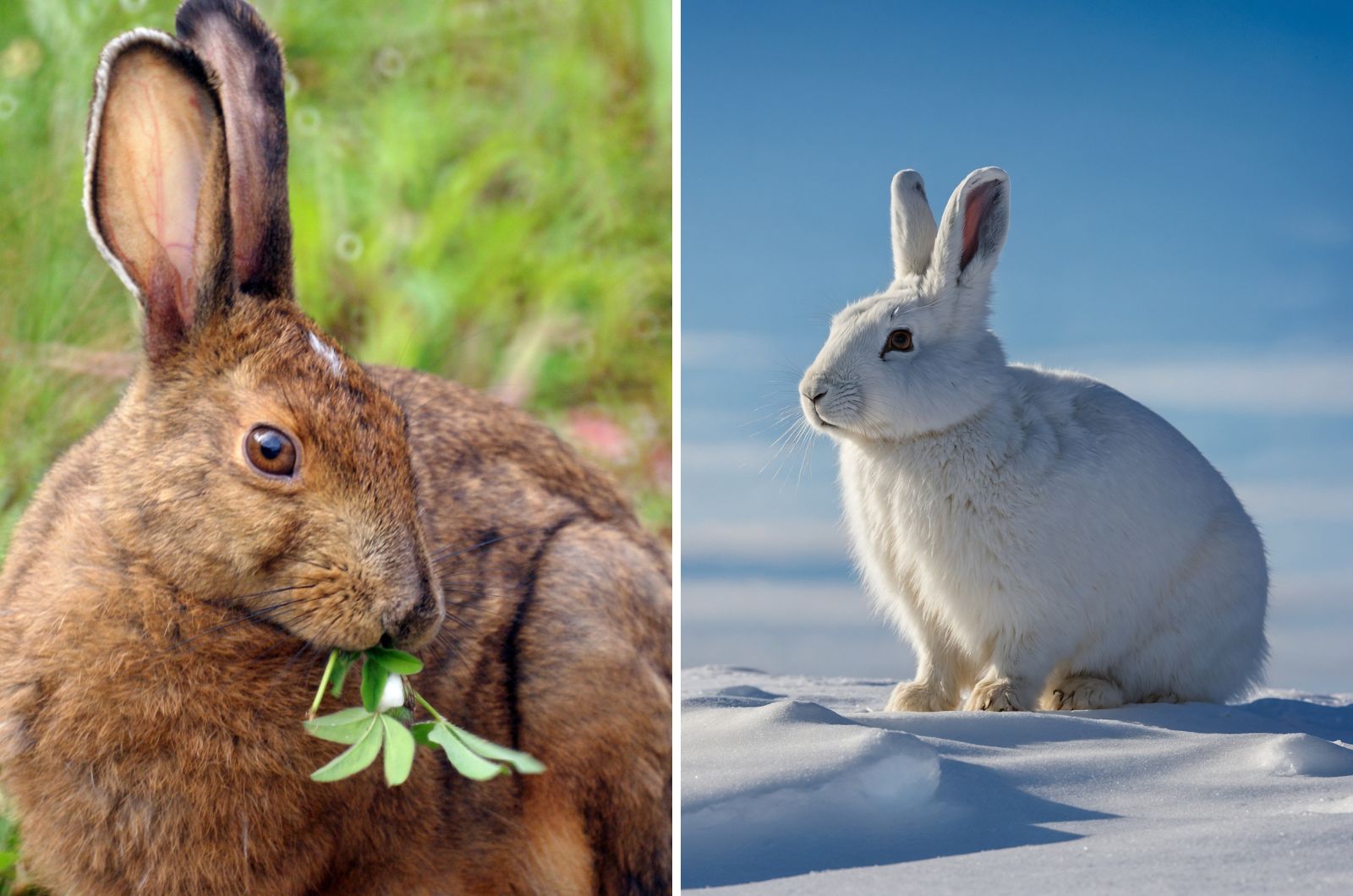
The Arctic hare, like the Arctic fox, has evolved one of the most remarkable survival strategies to cope with the bitter cold and long winters of the Arctic. Throughout the year, the Arctic hare’s coat is a neutral grayish-brown, blending well with the sparse tundra vegetation.
But as winter approaches, something truly magical happens: it undergoes a complete transformation, shedding its old fur to grow in a pristine, snow-white coat.
This dramatic color change not only makes the hare nearly invisible against the snow, offering protection from predators such as foxes and wolves, but it also helps regulate its body temperature.
The white fur reflects the harsh winter sunlight, while the thick undercoat provides excellent insulation, keeping the hare warm even during the coldest of days. The Arctic hare’s ability to change colors is a key part of its survival in the frigid conditions of the far North.
This coat change ensures that, no matter how deep the snow or how intense the cold, the hare can continue to thrive in its environment, from the frozen tundra to the icy wilderness.
3. Collared Lemming
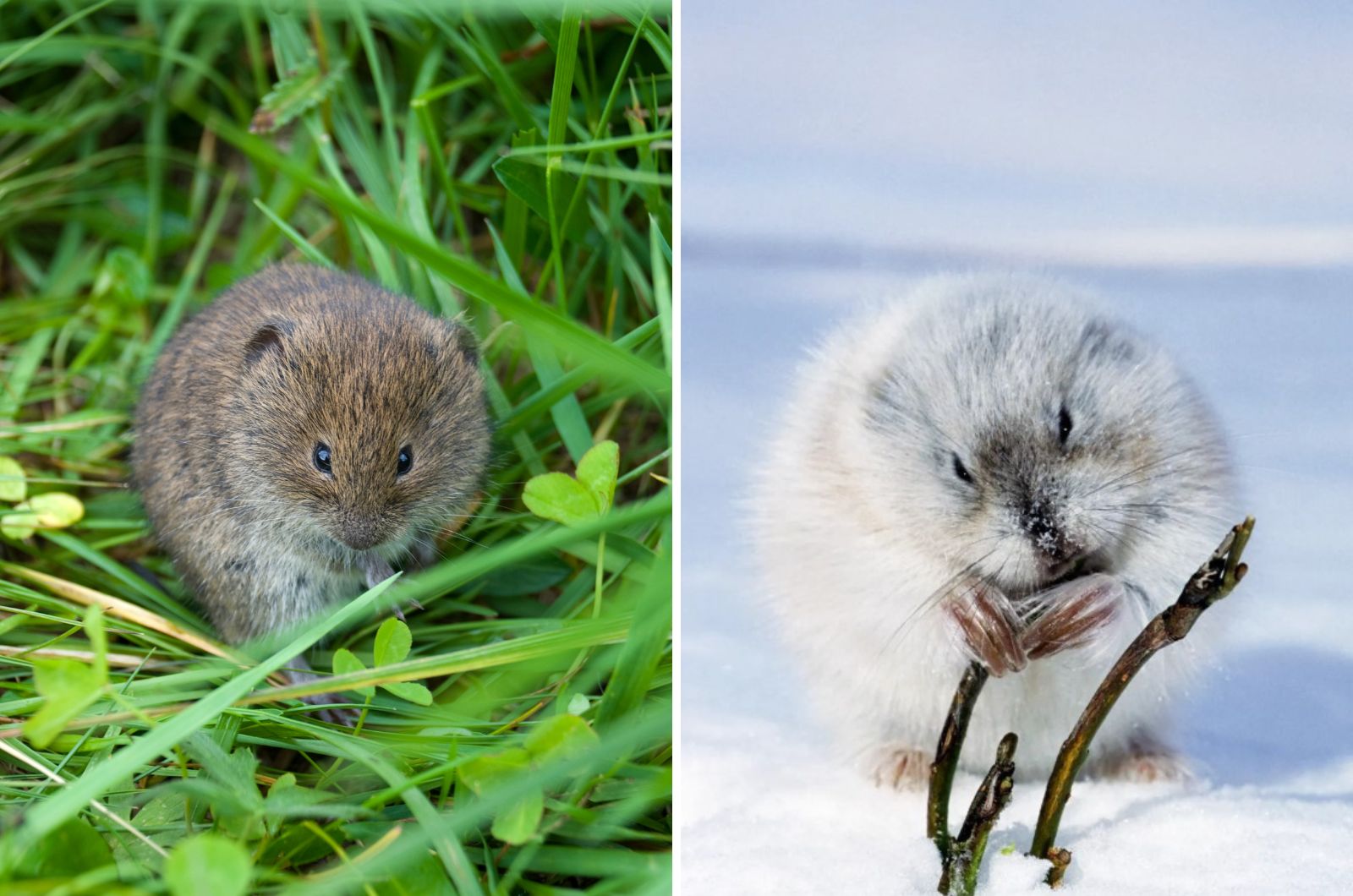
Collared lemmings are another exceptional example of nature’s brilliance when it comes to winter adaptation. These small, burrowing mammals are known for their brownish fur during the warmer months, which helps them blend into the rocky, moss-covered landscape of the Arctic.
However, once the first signs of winter appear, the lemmings undergo a dramatic change, swapping their brown fur for a thick, white coat. This transformation is not just for camouflage—though it certainly helps the lemming blend seamlessly into the snow-covered ground—but also plays a vital role in insulation.
The thick, fluffy white coat traps heat close to their bodies, providing protection against the bitter cold temperatures that often dip far below freezing.
The change in fur color significantly enhances their chances of survival, as it allows them to stay hidden from predators like snowy owls and arctic foxes while navigating their frozen world.
This seasonal transformation is a beautiful example of how animals in the Arctic have evolved to thrive in such an unforgiving environment.
With their white coats, collared lemmings can continue to forage for food and seek shelter during the harshest months of winter.
4. Ermine (Stoat)
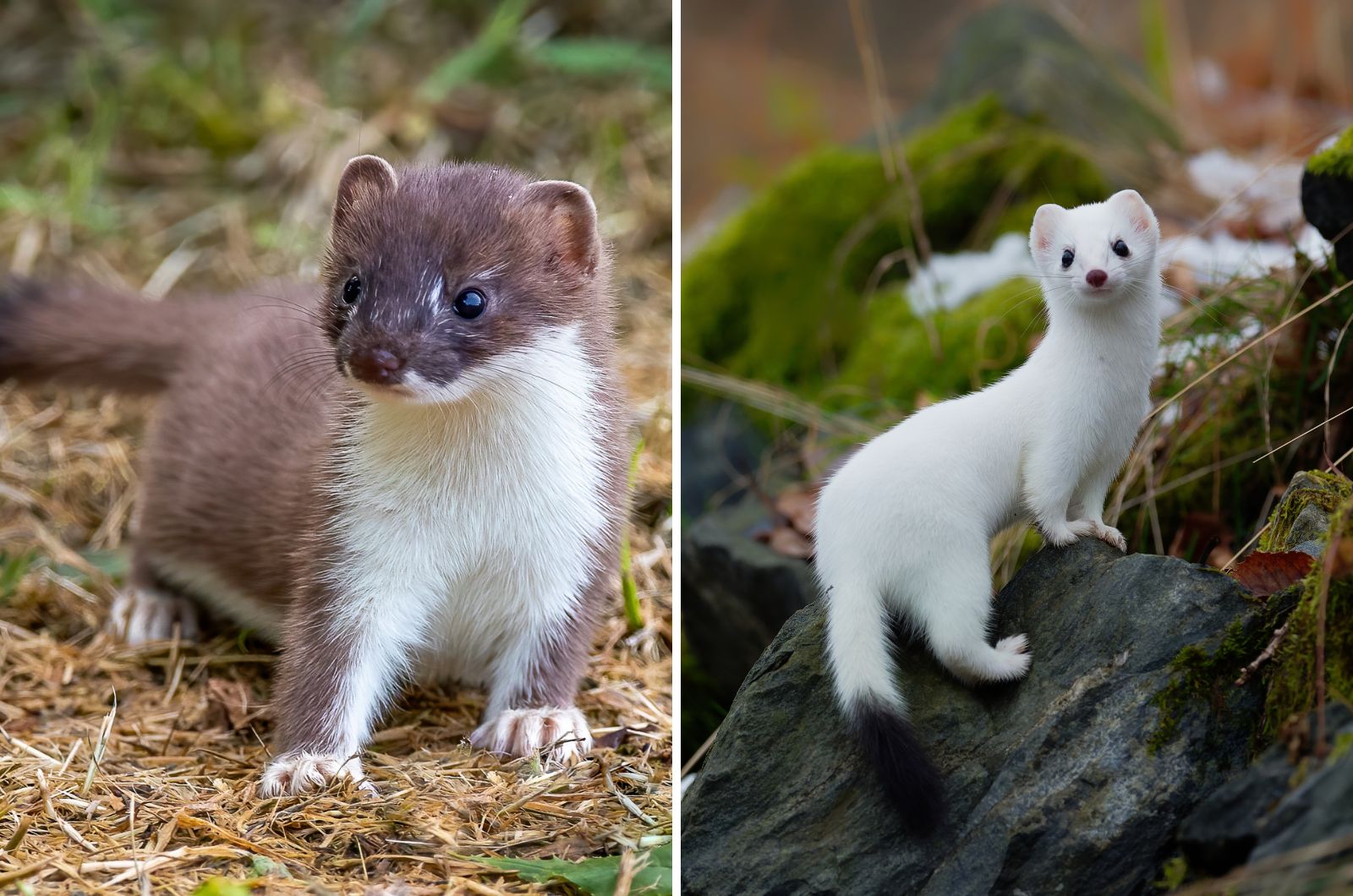
The ermine, also known as the stoat, is one of the most iconic animals in the world of winter camouflage. Throughout much of the year, the stoat sports a rich brown coat with a distinctive white belly, making it well-suited for life in the temperate forests and meadows where it is commonly found.
However, when winter sets in, the stoat undergoes a remarkable transformation, changing its brown fur to a dazzling white coat, except for the black tip of its tail, which adds a unique touch of contrast.
This stunning winter coat serves two critical purposes: first, it provides perfect camouflage against the snowy landscapes where the stoat hunts for smaller mammals like voles and rabbits.
Second, the fluffy white fur is incredibly insulating, keeping the stoat warm during its nightly hunts in freezing temperatures.
As a carnivore, the ermine relies on its ability to remain hidden while stalking its prey, and this winter coat is key to remaining undetected by both predators and prey alike.
The stoat’s ability to change colors and adapt to the changing seasons ensures that it remains a stealthy, successful hunter in the harsh Arctic winter.
5. Peary Caribou
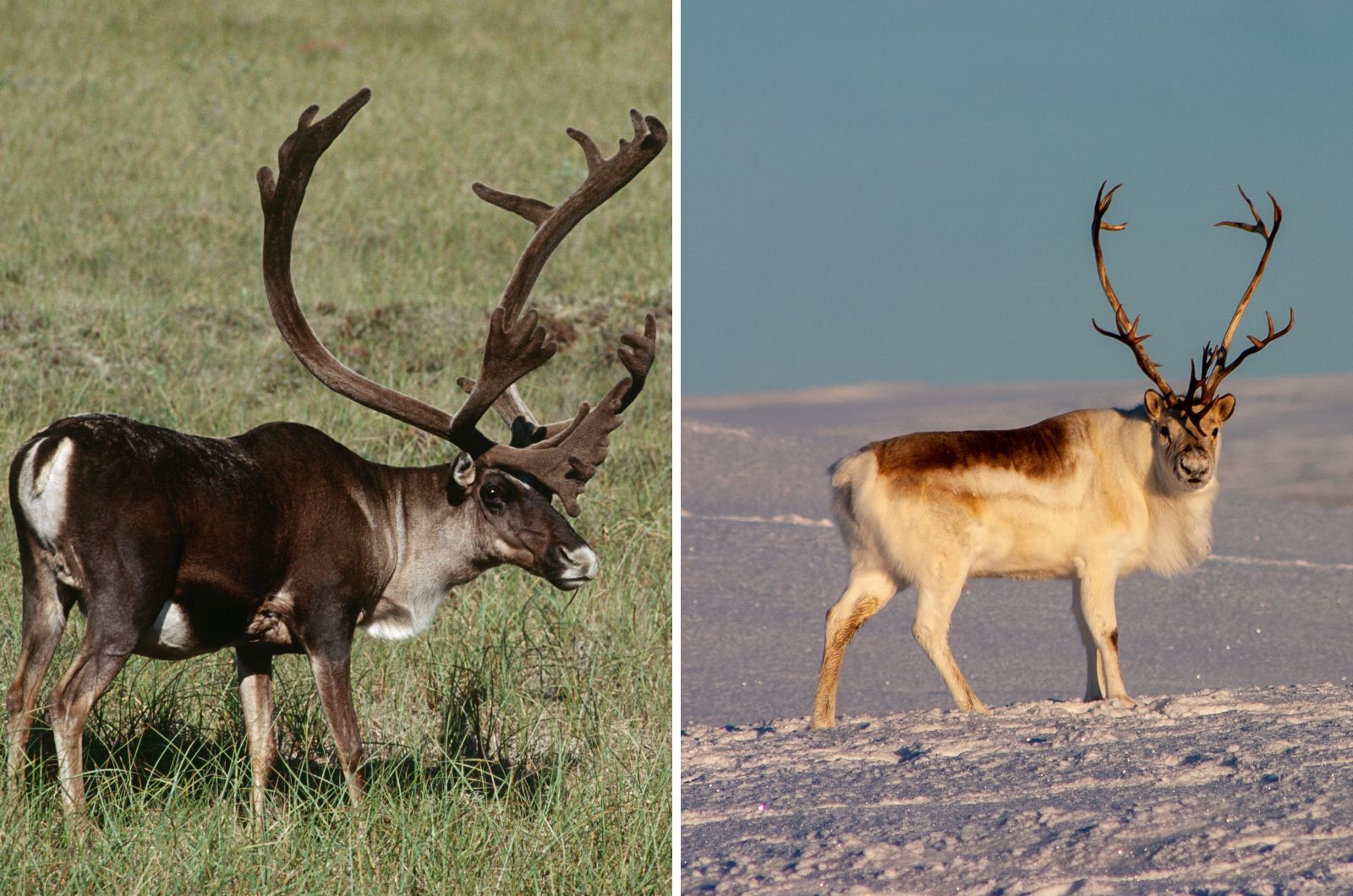
The Peary caribou is an extraordinary animal that has evolved perfectly to survive in the extreme Arctic environment. Unlike other caribou species, the Peary caribou is specifically adapted to the icy landscapes of the Canadian Arctic Archipelago.
As winter approaches, the Peary caribou’s coat transforms, becoming almost entirely white, which helps it blend into the snowy tundra.
This white fur not only provides camouflage, making it harder for predators like wolves and polar bears to spot them, but it also reflects sunlight, aiding in temperature regulation.
The caribou’s white fur works like a natural reflector, helping them maintain a slightly warmer body temperature as the sun’s weak rays bounce off their coat.
This adaptability is a crucial survival strategy in one of the coldest environments on the planet. Peary caribou are perfectly built to endure extreme conditions, from deep snow to biting winds, and their seasonal coat change ensures that they are well-equipped to handle whatever winter throws their way.
The Peary caribou’s appearance is so fitting, it could easily be one of Santa’s sleigh pullers, right?
6. Siberian Hamster
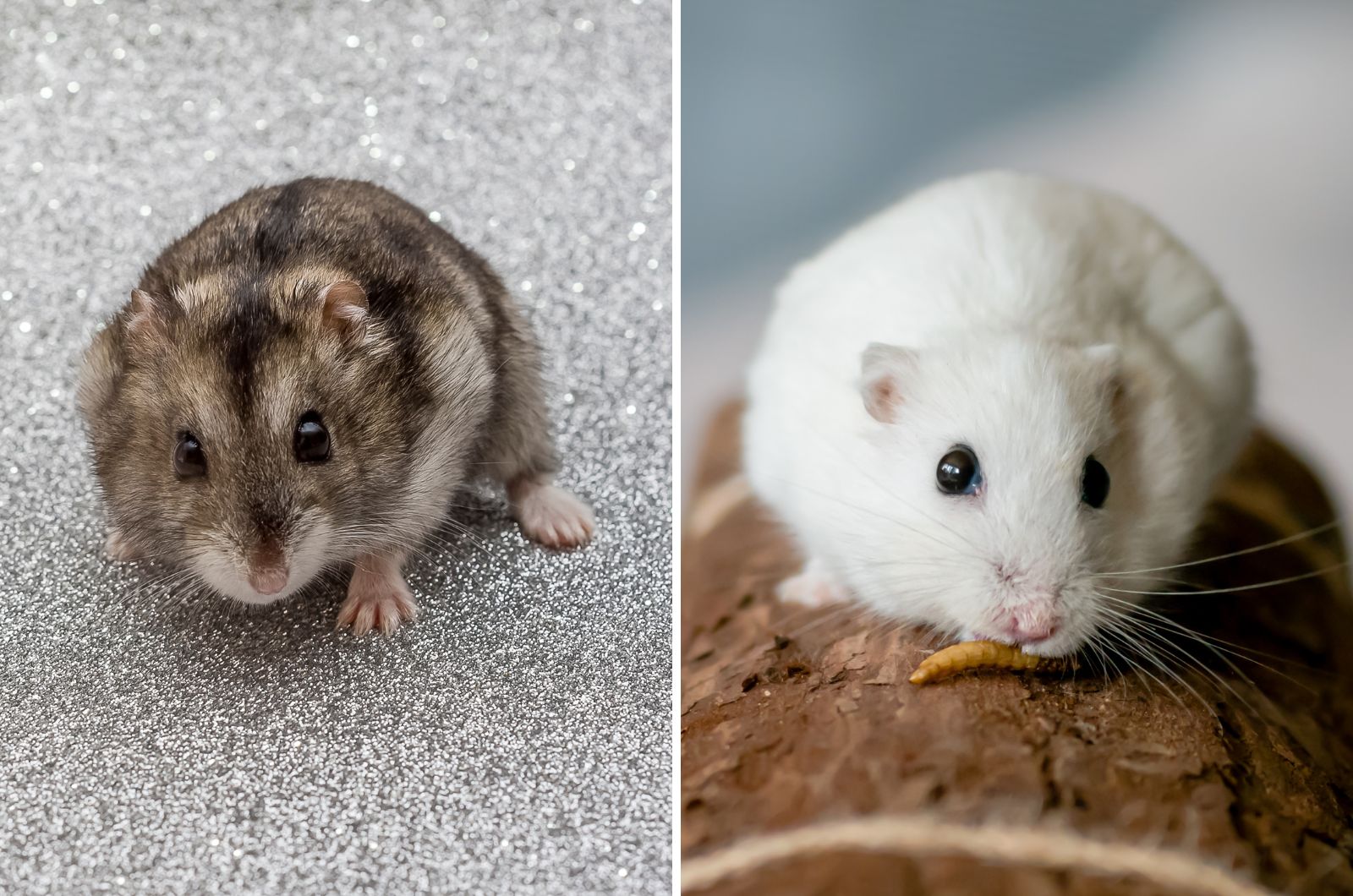
The Siberian hamster, also known as the winter white dwarf hamster, is an adorable little creature that undergoes one of the most charming transformations as winter approaches.
In the warmer months, these hamsters sport a soft, silvery-brown coat that helps them blend in with the rocky and grassy terrain of their native Siberian home.
However, as the days grow shorter and the temperatures drop, the Siberian hamster undergoes a dramatic change, shedding its brown fur and growing a thick, bright white coat.
This transformation serves a dual purpose: it provides the hamster with camouflage against the snow-covered landscape, protecting it from predators such as owls and foxes, and it helps insulate the hamster against the chilling cold.
The winter white dwarf hamster’s coat is not only a thing of beauty but also a crucial adaptation that helps it survive through the harsh winter months.
As a pet, these little creatures are a reminder of the wonders of nature’s ability to adapt to the changing seasons, and if you’ve ever had the pleasure of owning one, you’ve witnessed firsthand how their winter coat is one of the most endearing sights.
Interestingly, this might be the only animal on our list that you could actually keep as a pet. Wouldn’t you like to adopt one this winter?
7. Snowshoe Hare
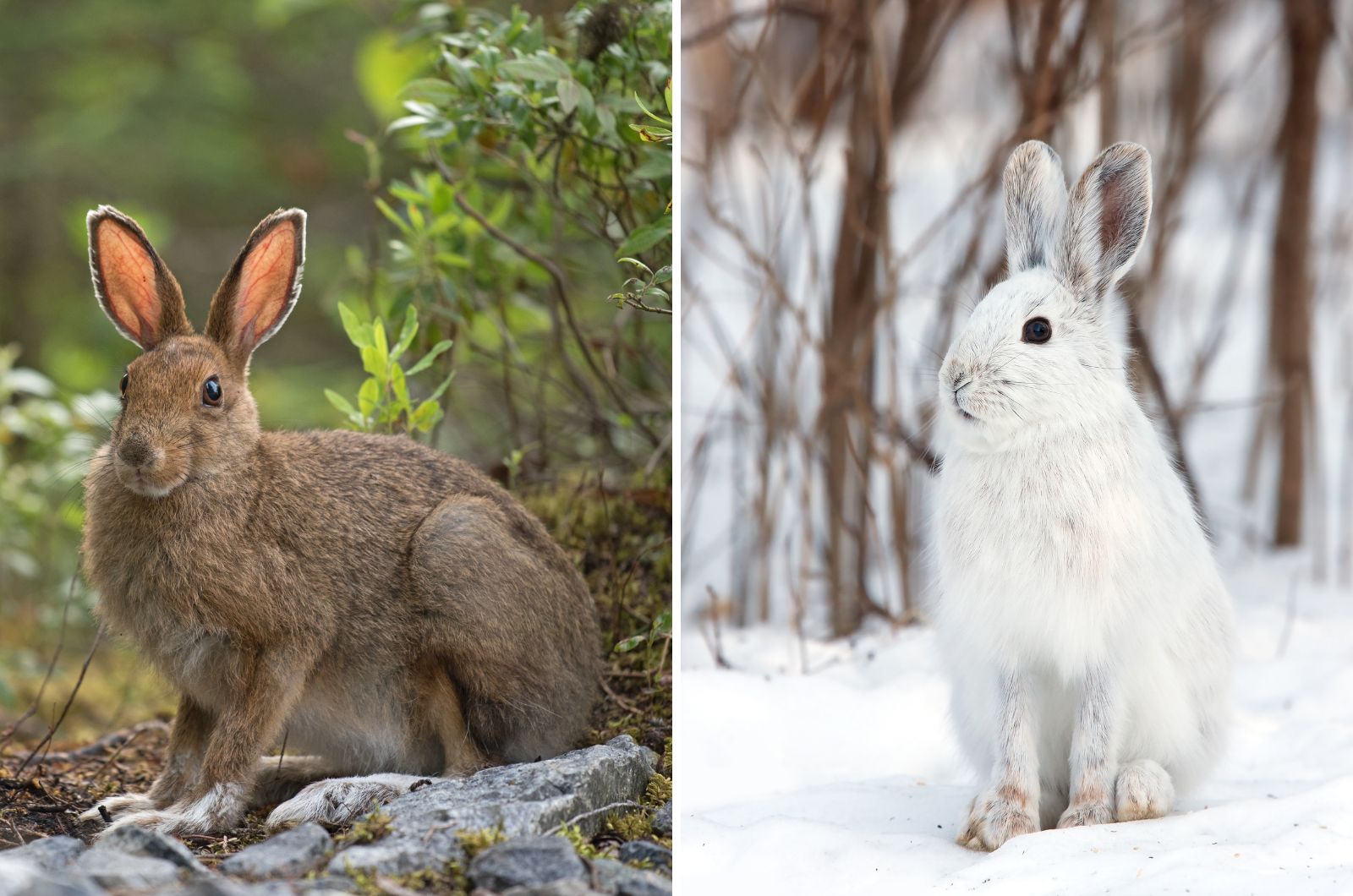
The Snowshoe hare is a master of camouflage, and its ability to adapt to the changing seasons is nothing short of remarkable. During the warmer months, the Snowshoe hare’s coat is typically a brown or gray, allowing it to blend in with the forest floor, where it spends much of its time.
But when winter arrives, the transformation is striking: its fur turns bright white, perfectly matching the snow-covered landscape. This seasonal change not only provides the hare with incredible protection from predators, such as lynx and coyotes, but it also helps regulate its body temperature.
The thick white fur insulates the hare, keeping it warm as it forages through the snow for food. The Snowshoe hare’s ability to blend seamlessly into its environment is an essential survival tactic in the wild, allowing it to thrive even as the temperatures plunge.
In the dead of winter, when the snow blankets the ground for months, the Snowshoe hare is perfectly suited to its surroundings, both in terms of appearance and temperature regulation.
8. Willow Ptarmigan
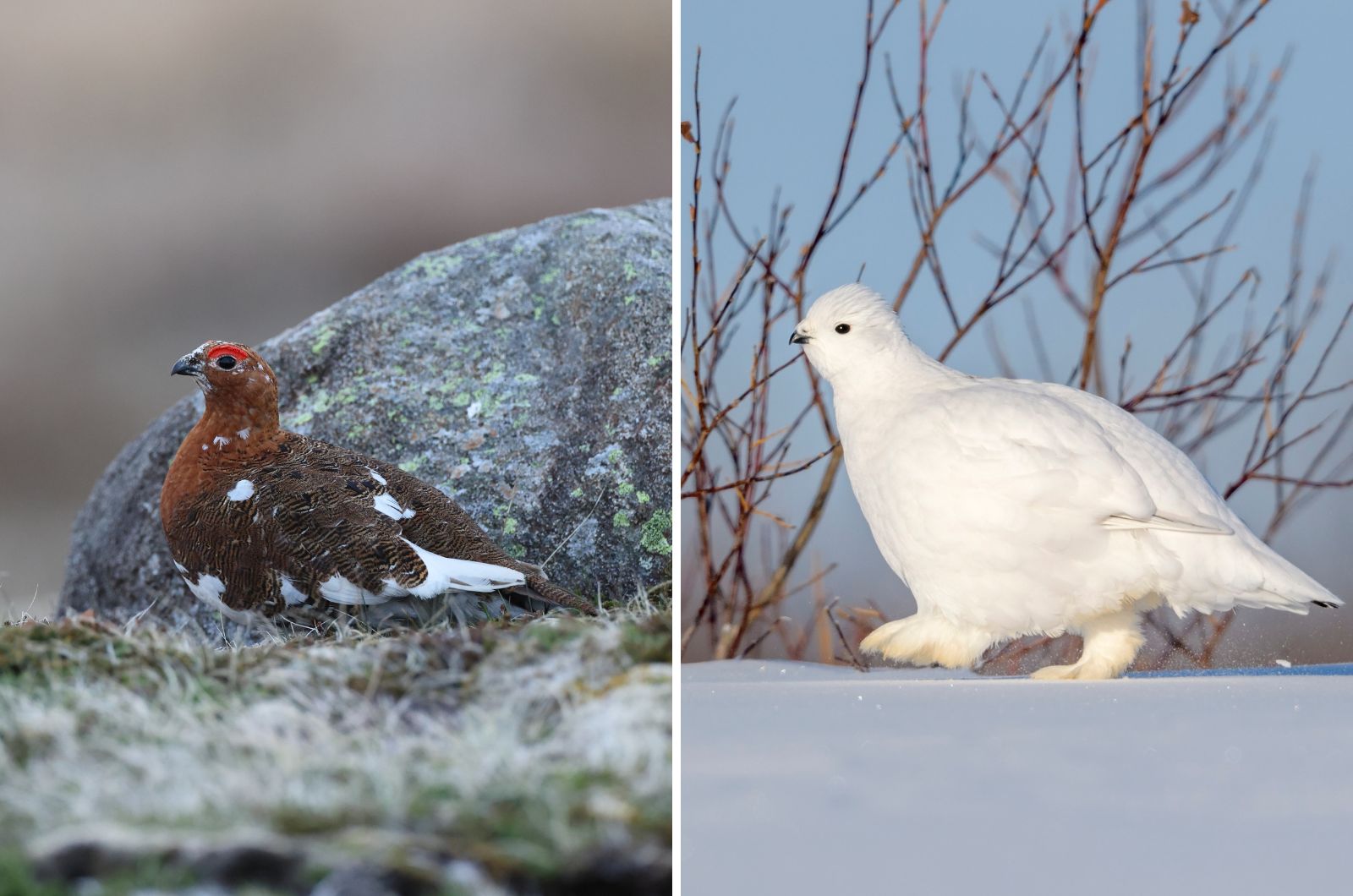
Last but not least, the Willow ptarmigan is another incredible example of nature’s adaptability. This small, sturdy bird undergoes a dramatic seasonal change that helps it survive in the harsh Arctic and subarctic regions.
In the summer, the Willow ptarmigan’s feathers are a rich brown, mottled with a mix of earthy tones that help it blend in with the tundra’s summer vegetation.
However, as the first snow begins to fall and winter sets in, the ptarmigan undergoes one of the most stunning transformations in the bird world. Its feathers turn completely white, providing perfect camouflage against the snow and ice that cover the tundra.
This change is vital for avoiding predators, as the ptarmigan is an easy target for birds of prey, such as hawks and owls. The white feathers not only serve to protect the ptarmigan but also provide insulation, helping to keep it warm during the long, cold winter months.
The Willow ptarmigan’s ability to turn white and blend into its environment makes it a perfect example of how nature equips its creatures to survive in even the most extreme conditions.
9. Snowy Owl
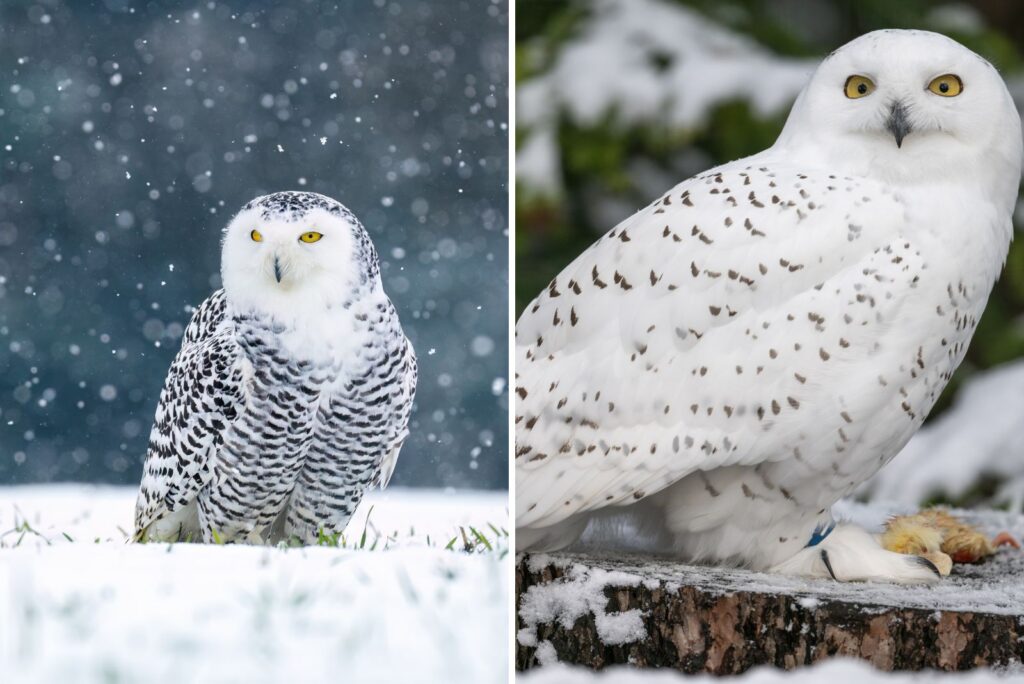
The Snowy Owl is another iconic creature of the winter landscape, and its ability to blend seamlessly into the snowy tundra is nothing short of breathtaking.
Throughout the year, the Snowy Owl’s feathers are a striking mix of white and brown, which helps it remain camouflaged against the rocky and forested terrain.
However, as winter descends, the owl’s feathers become more predominantly white, providing excellent camouflage against the snow-covered ground. This helps the owl stay hidden from potential prey, such as lemmings and voles, which are the mainstays of its diet.
The Snowy Owl’s snowy plumage also helps it regulate its body temperature, as the insulation provided by its thick feathers is perfect for surviving the freezing temperatures of the Arctic. In addition to their stunning transformation, Snowy Owls are also known for their exceptional hunting skills.
Their ability to remain virtually invisible against the snow, combined with their powerful talons and keen eyesight, allows them to hunt effectively even in the harshest winter conditions. This magnificent bird is a true symbol of the winter wilderness, perfectly adapted to survive in one of the coldest places on Earth.
10. Muskox
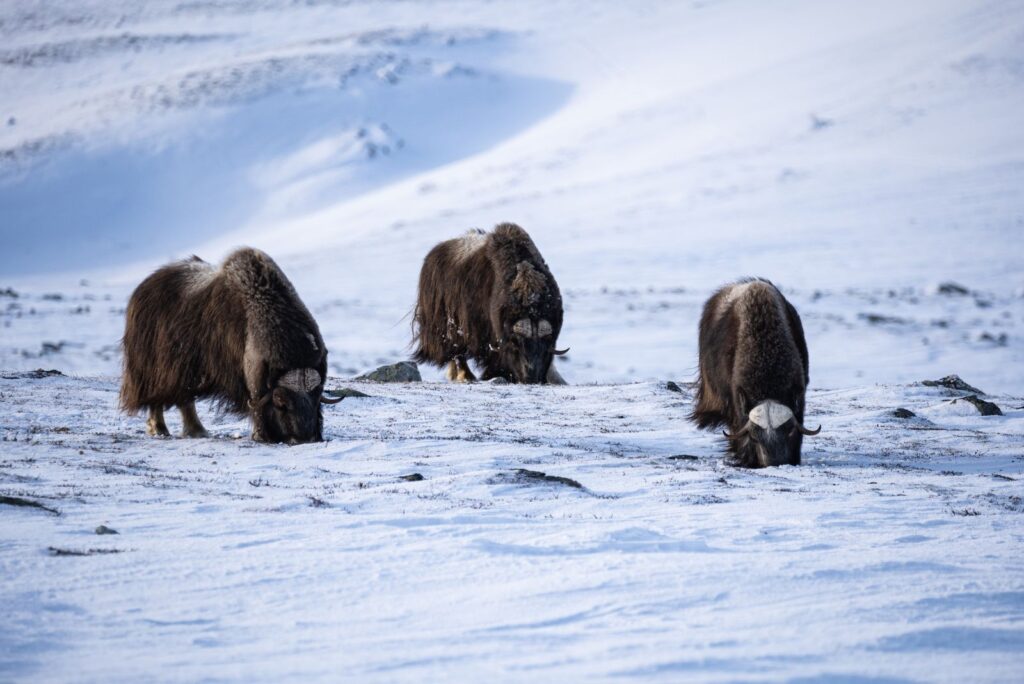
The Muskox, a large and resilient mammal of the Arctic, undergoes a subtle but critical transformation as winter approaches.
These shaggy creatures are known for their thick, woolly coats, which keep them warm in the extreme cold of the northern tundra. In the summer months, their fur is generally dark brown or even reddish, providing some camouflage in the rocky and sparse vegetation of the Arctic.
However, when the bitter winter temperatures arrive, the Muskox’s coat becomes denser and lighter in color, sometimes appearing almost white, which helps them blend in with the snow-covered landscape.
This thick winter coat is made up of two layers: a coarse outer layer and a softer, insulating undercoat that helps retain body heat. The change in fur color is a crucial adaptation that enhances the Muskox’s survival.
Their ability to withstand Arctic blizzards and temperatures as low as -50°F is a testament to their exceptional resilience, and the transformation of their fur is an essential part of their strategy to stay warm and protected in one of the harshest environments on Earth.
The Muskox’s ability to thrive in such extreme conditions makes it one of the most remarkable survivors of the Arctic.

